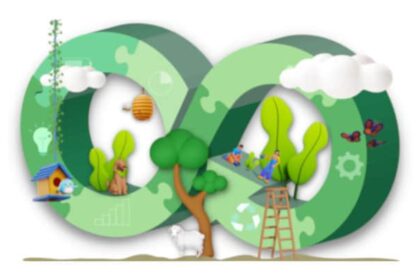
There are many initiatives to tackle sustainability, and lots of activities that “feel good”. From recycling in the office to reducing waste and printing, there’s lots of good work already taking place. But making your workspace truly sustainable means going a lot further, and baking a culture of sustainability into every facet of your business.
As IT is a big contributor to emissions, this article focuses on what sustainable IT really means, how to put it at the centre of your strategy while working hand-in-hand with business growth, and the changes you can implement in reality.
What does sustainable IT really mean?
The office and workplace has changed forever, but the interpretation of sustainable IT varies considerably between different organisations. Taking sustainable IT from a cool buzzword or nicely presented page on your website is the real trick, but it’s surprising just how quickly you can make it a reality.
For Capgemini, “sustainable IT is an umbrella term that describes an environment-focused approach to the design, use, and disposal of computer hardware and software applications and the design of accompanying business processes”. The research also stressed the importance of considering the manufacturing aspects of new computers, including the types of metals used in production, water quantity and conservation, and the principle of the circular economy across the process.
To establish a sustainable IT strategy, the first important step is to recognise and understand the impact IT has on the environment, and then planning changes accordingly. To be effective, this process needs to look across the entire lifecycle of your cloud or on-premise infrastructure, networks, applications and data, and devices – not just at how they are disposed of, but how they are manufactured, managed, and how efficiently they run across the entire lifecycle and supply chain.
Sustainability and business growth
A crucial aspect of a comprehensive sustainability strategy is that it should not come at the cost of business growth – and nor does it need to. Sustainable IT does not mean running old PCs into the ground in an effort to reduce recycling. On the contrary, running a fleet of cutting edge PCs and devices for your staff can enhance their productivity, and boost morale while making a positive contribution to the environment.
By choosing devices manufactured with Post-Consumer Recycled material (PCM), you can reduce the impact at the manufacturing stage of new devices.
User education across all seniorities across the organisation can also make an important contribution to sustainability goals. From small objectives such as thinking about the amount of time a device is on charge to the number of unnecessary browser tabs or applications running at any given time, these measures can all contribute to a lower carbon output.
Four ways to make your IT truly sustainable
Cutting across the theory, here’s four ways to take the next step in your IT sustainability objectives.
- Working with responsible IT manufacturers with modern, responsible manufacturing processes is one of the most important contributions you can make to your sustainability goals.
- Re-assess your data centre or “IT room” practices, from reducing cooling practices, optimising CPU usage, and migrating to cloud-based technologies to lessen the need for in-house infrastructure.
- Be responsible with hardware replacement and purchasing practices, from ensuring that you source new devices such as the Acer TravelMate Vero with recycled components and eco modes for example.
- Introduce a culture of sustainability across your entire organisation, with buy-in from the top down. This will ensure that the big and small details are all taken care of, and the entire business is committed to the same objectives.
Find out more
For more information on how PAVilion and Acer can help your business with its sustainability objectives, visit our dedicated page HERE.




